Menu
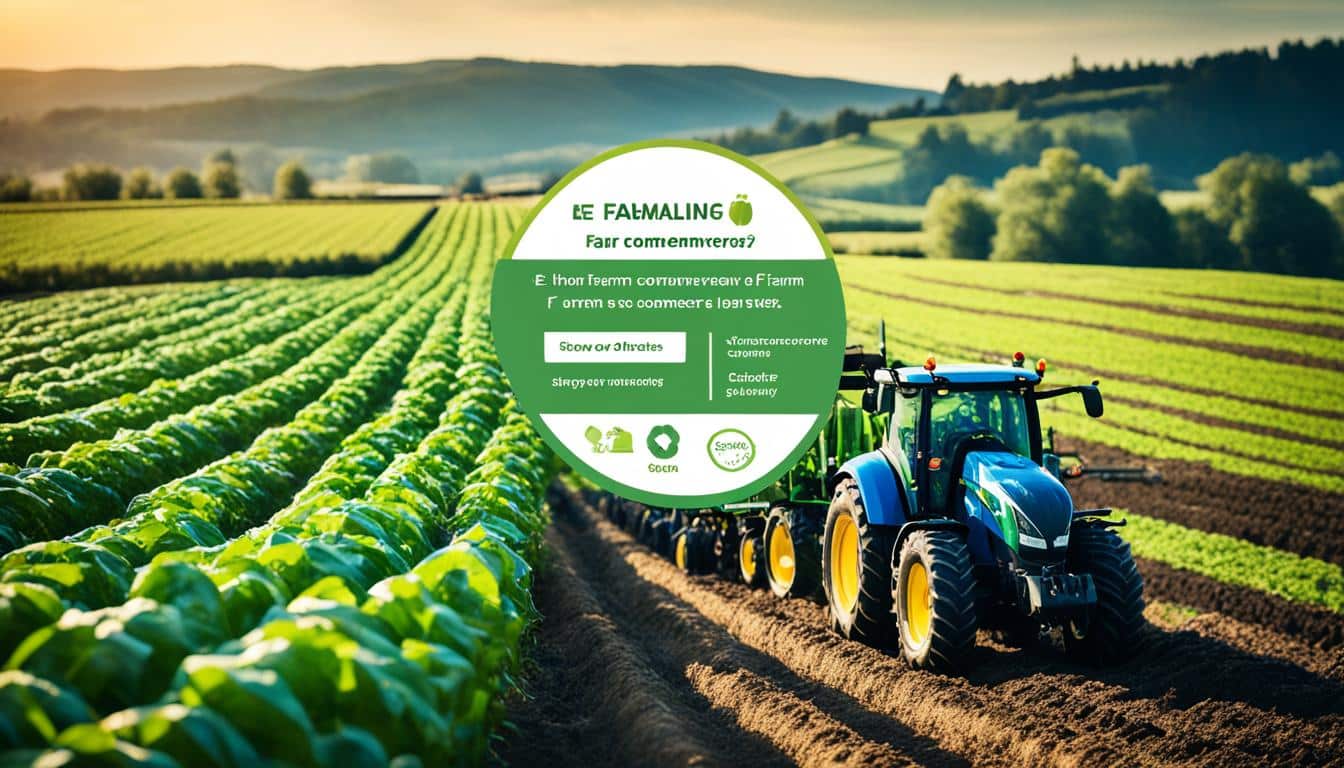
Did you know that buying seeds online saves farmers 2-3 hours per transaction? This benefit just starts to show how e-commerce can change farming. Farms that use e-commerce see big jumps in profit. This shows tech can change how farming makes money.
E-commerce is very important for farms now. It helps them sell more and find new customers. It also makes buying farm products easier for customers. But, it’s not easy. Farmers need to promote their products well. They also have to keep in touch with customers. Plus, handling the tech and making sure their products work online is a challenge.
Then, there’s the work of getting products to customers safely. Whether farmers deliver themselves, use shipping, or pick-up, they need a good plan. Understanding e-commerce fully helps farms make more money. This leads to growth and stability for the future.
The farming sector is now part of the digital revolution, thanks to e-commerce. It changes how farmers, suppliers, and buyers connect. This includes sustainable e-commerce farming. This has opened many doors, letting farmers sell worldwide. It also offers buyers more products to choose from.
Many farmers started using e-commerce when they faced challenges during the COVID-19 pandemic. They saw that going digital could lead to more growth, reach more markets, and make more money. By adding e-commerce into their plans, farmers can expect a big return.
Statistical data shows many good things about using e-commerce in farming:
This move to digital can lead to a big boost in growth and money for those in online sales. But, it’s important to think about the challenges and plan well.
E-commerce in farming offers big benefits. It helps farms reach more markets and work more efficiently. A big plus is how it spreads out where you sell, making you less tied to just local or seasonal sales.
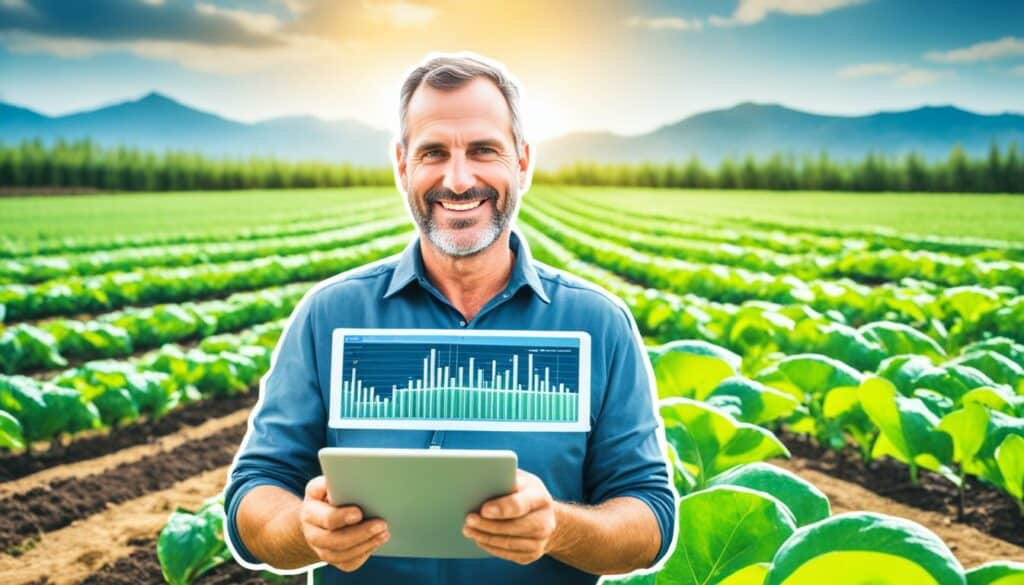
E-commerce lets farms sell all year round. This means a steady place to sell, unlike the ups and downs of face-to-face selling. For example, Farmdrop in the UK and Ninjacart in India are great online spots for farmers.
With e-commerce, farms can attract more customers. People who buy once might come back more if they find the farm online. Up to 40% of visitors to farms are first-timers. E-commerce can turn some of them into regulars through smart online selling.
Selling online makes things easy for customers. Clear product info and good photos help sell more. A farm’s online shop, if well-run, lets people buy what they want when they want. This is key to making sales and keeping customers happy.
“Online stores offer a stable presence throughout the year, providing a consistent market outlet for farm businesses.”
Buyers love the freedom of shopping online any time. This demand helps e-businesses do well. Good marketing on social media and email keeps farms in people’s minds, bringing more sales.
| Benefit | Impact on E-business |
|---|---|
| Market Outlet Diversification | Ensures year-round stable presence |
| Expanded Customer Base | Increases repeat purchases and captures new customers |
| Customer Convenience | Enhances engagement and satisfaction through easy access and comprehensive product information |
The good from e-commerce adds up. It grows a business, keeps customers coming back, and is for everyone. Going online is smart for farms, making selling easier and more effective.
Farms that start selling online face many challenges. They need to think carefully and plan well. Moving to e-commerce is important for farms wanting to make money online in a sustainable way.
One big issue is the time it takes. Running an online shop means doing a lot of different things. This includes listing products, answering customer questions, managing orders, and shipping on time. It’s hard for farmers to do all this and their regular farm work, too. This juggling act can lead to tiredness and mistakes.
Getting the tech side right can be tough for farms. They need to understand how to use websites, keep track of what they have to sell, and take payments online. Small and medium farms often face problems getting the tech help they need. This is especially true if they don’t have enough money to invest in good tech and support services. They might not be ready to handle things like websites going down or cyber-attacks.
Not being tech-savvy can hurt a farm’s online sales. Plus, sending out products safely makes things even more complicated. Farmers need to be good at managing both their tech and their products. Getting help or training for these tasks is crucial for a smooth online start.
The tough parts of going online are worth it for many farmers. Selling online can help save money and reach more customers. It’s all about finding the right balance between what they put in at the start and what they get back in the end.
The table below compares how well different countries have done in online sales. It shows the good things and the struggles farms face when they go digital:
| Country | Rural Online Retail Sales (2019) | Growth Rate (%) | Number of E-commerce Adopters |
|---|---|---|---|
| China | 1.7 trillion yuan | 19.1% | 406 |
| India | $50 billion | 28% | Not specified |
| Iran | Not specified | Not specified | Not specified |
| Africa | Jumia: 22,000 listings | Not specified | Not specified |
Getting more customers and reaching wider markets is big for farm businesses going online. It means farms can now sell to people all over, not just nearby. This leads to making more money through tech-savvy farming.
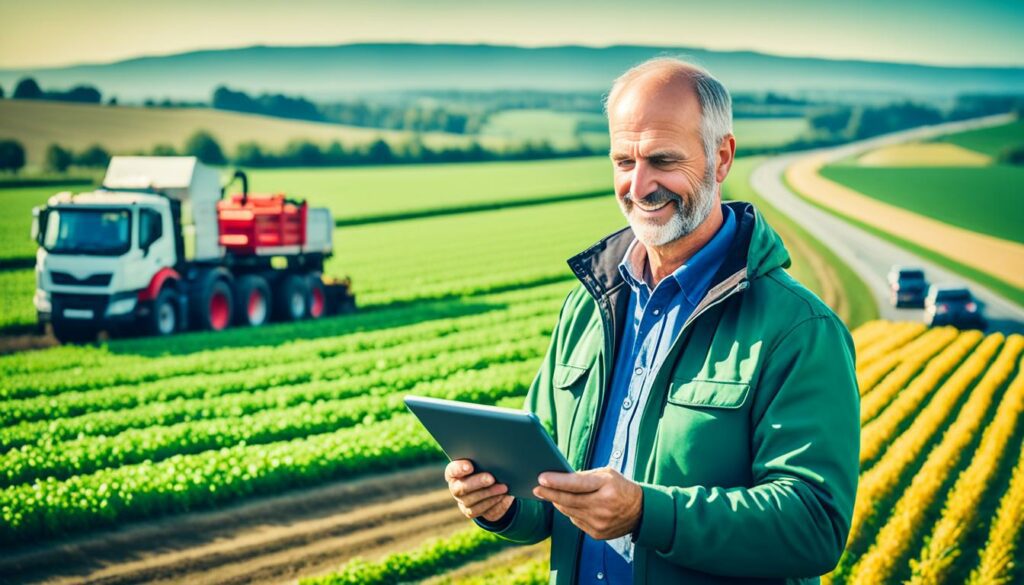
Online marketing and social media ads help farms reach people they couldn’t before. It lets farms make their brand better known and build lasting friendships with buyers. Plus, with the internet, comparing prices is easy, saving them money and upping profits online.
By selling straight to customers, farms make sure the prices are fair. This move keeps buyers coming back and keeps the farm business strong. Also, selling online often means there’s help with loans, which help farms grow and last longer.
Farmers do need to spend time and learn about e-commerce, though. They should think about this work against the good they’ll get. But, selling online can give them key info about their customers. This data helps make the online shop better, drawing in more buyers and more sales.
| Benefits | Impact | Statistics |
|---|---|---|
| Expanded Customer Base | Increase in market reach | Percentage rise in sales revenue |
| Cost Savings | Reduced input costs | Ability to compare prices |
| Financial Support | Sustainability and growth | Loan facilities |
| Customer Engagement | Improved retention rates | Use of website analytics |
| Online Marketing | Enhanced brand presence | Reach to otherwise inaccessible audiences |
Data collection and analytics are vital in running e-retail farms well. These tools help farms learn about what customers like and how they shop. Knowing this information helps farms to get better at what they do and make more money online.
Online shops offer a lot of data that can make the customer experience better. By studying this data, farms can sell products that people want more accurately. They can figure out what products are top sellers, what’s popular in different seasons, and what customers say to make better choices in what they sell and how they tell people about it.
The use of analytics in farming is expected to grow a lot. Soon, it’s going to be worth over a billion dollars. This is because we’re finding new ways to learn from things like social media. Platforms like Twitter and Facebook show us what people like and talk about. This information, when used with e-commerce data, helps us understand our customers better.
Analytical tools like SimilarWeb help us know how we’re doing compared to other sellers online. And checking out what’s selling well on Amazon and eBay tells us what people are interested in right now. Such insights give farms a competitive edge in the online marketplace.
With the world’s population growing, being smarter with the way we farm is key. Using data can help us grow, sell, and distribute food more efficiently. This is vital as a lot of food doesn’t reach people and is wasted. Data analytics can help us do better in many ways, making farming not just profitable but also sustainable for the future.
In conclusion, making good use of data and analytics is crucial for online farm success. It makes businesses stronger and more future-ready. To do well in e-commerce farming, we must fully embrace these technological changes.
Learning how to present and detail your products well is key in online farming. Good images and detailed descriptions make customers more interested. Giving tips on how to use the products or recipes can also help a lot.
Adding lots of product info can make your online shop more successful. It draws in more people and keeps them coming back. You might even catch new sales or make shopping easier for people who can’t visit in person.
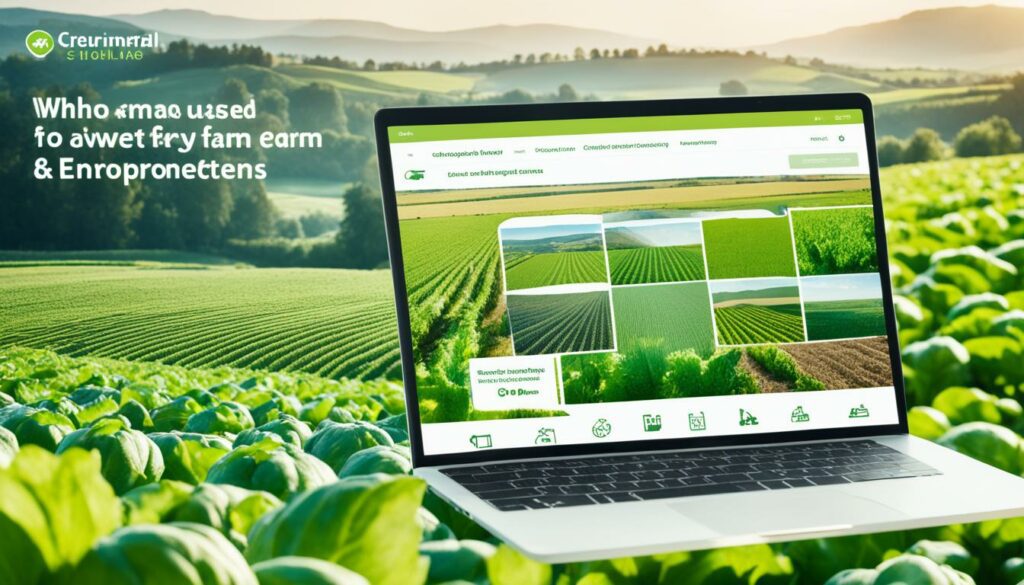
Watching how people use your site can teach you a lot. This info helps make shopping online better, leading to more sales. But, setting up an online shop takes time and know-how.
When you pack and send out your items, you need a smart plan. This keeps costs down and your products looking good. Some items might not do well online, but presenting others well can boost your farm’s sales.
The online market for farm products is growing fast. It’s expected to keep growing in the years ahead. Sites like Farmdrop and Rural Taobao are changing farming by making it easier for people to buy. They connect consumers with a wider range of farm products online.
When farms sell online, they make more money using new technologies. Online platforms merge traditional and modern ways of doing business. This helps farms earn more money by selling on the internet. The change is seen in both selling to businesses (B2B) and people (B2C), and it’s helping in various sectors including buying for Governments, companies, the public, and others.
Important trends in this industry include more people buying from mobile phones, using social media to promote products, and blockchain to increase trust in the supply chain. These trends are key in growing money made through tech in farming and selling farm products online.
Big names like Amazon, Alibaba Group, and JD.com are leading the way. Recent data shows that farms making online sales are more profitable. They’re growing their online sales faster than their traditional sales. Here’s a quick look at the situation:
| Metric | Traditional Channels | Online Marketplaces |
|---|---|---|
| Farm Profitability Increase | 5% | 20% |
| Customer Reach Increase | 10% | 40% |
| Average Customer Satisfaction Rating | 3.5 | 4.5 |
| Product Range Diversification | 15% | 50% |
Although there are challenges, the rise of online farm sales is steady. The demand for farm products is growing. And, technology in farming is increasing. Together, these factors are boosting the money farms make online. This is now a key part of how farms do business today.
Technology is key to success in e-business farming today. It has become a main focus for many. This has brought about big changes and endless new opportunities.
The introduction of IoT in farming has changed the game. IoT devices help monitor and manage farms better. This leads to more productivity and saving resources. For example, smart sensors can check on crops in real time to manage water and pests. This detailed watch not only helps the environment but also boosts farm profits linked to technology.
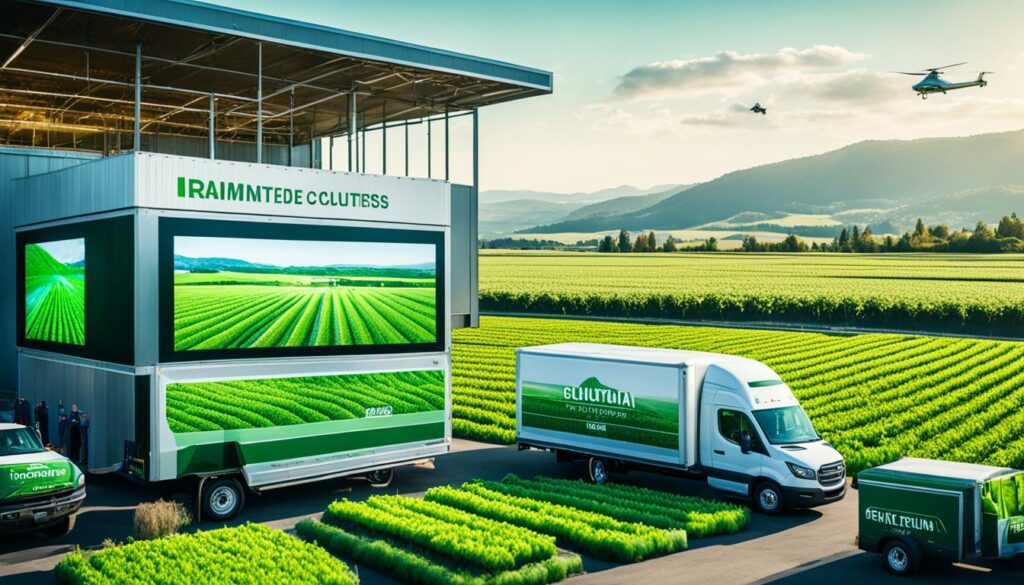
Adding these latest IoT features has really upped the earnings of many farmers. In poor areas, using e-commerce in farming led to a 224-232% rise in income. Plus, 45-59% of farmers now use smartphones for pest control, showing IoT’s good effect on farming today.
Blockchain tech is changing the way we run e-business in farming too. It makes the farming supply chain both transparent and trackable. This means buyers can check where and how their products were made. It builds trust with customers and adds to the honesty of farming income built on technology.
The use of blockchain in farming is expected to grow a lot in the next ten years. Information from the Wilbur-Ellis company’s farming section hints at big changes ahead with blockchain. This fits with the growing use of digital technology in farming.
These new technologies are changing the farm business in a big way. They’re improving how we work, earn, and take care of the planet.
| Technology | Impact on Farming | Percentage Increase/Adoption |
|---|---|---|
| IoT Devices | Enhanced Productivity and Efficiency | 47% Adoption in Developing Countries |
| Blockchain | Transparency and Traceability | Forecasted Significant Increase |
| Smartphones | Pest Control Adoption | 45-59% |
Sustainable e-commerce farming practices are growing fast. They aim for both eco-friendliness and profits. Organic farming and selling food direct are key to these efforts.
Organic farming is doing well in online markets, matching what green consumers want. It cuts out the middlemen with direct online sales. This lets organic farmers show exactly how they grow their food. It helps buyers know what they’re getting.
You can also find the best prices from different sellers online. This helps organic farmers make more money. So, sustainable e-commerce farming supports organic online agriculture income growth.
E-commerce stops food from being wasted. It skips many middle steps and gets food straight to buyers. This makes food fresher on arrival. It means fewer foods go to waste.
This method also helps farmers sell more, without go-betweens. Making loans available on online platforms is another win. It supports farmers during tough times and boosts organic online agriculture income.
The digital change in farming offers lots of chances. It makes farms more efficient and cuts trips to buy supplies. Selling online means a bigger range for farmers. It also helps them get more income through smart sales and fewer leftover crops.
Switching to green ways and selling direct can really lift up farmers. It mixes going green with smart selling for better profits.
Direct-to-consumer (D2C) models are changing the way farming products are sold online. They let farmers sell directly to customers. This method is key for effective online farm management. It gives farmers more say in their prices and profits. It also helps build stronger ties with customers.
Today, more people want fresh, organic food from local farms. This is because they care about the planet. E-commerce sites meet this need, letting farmers connect with more buyers. This cuts out the middlemen. The result is better economic power for farms and a boost to local economies.
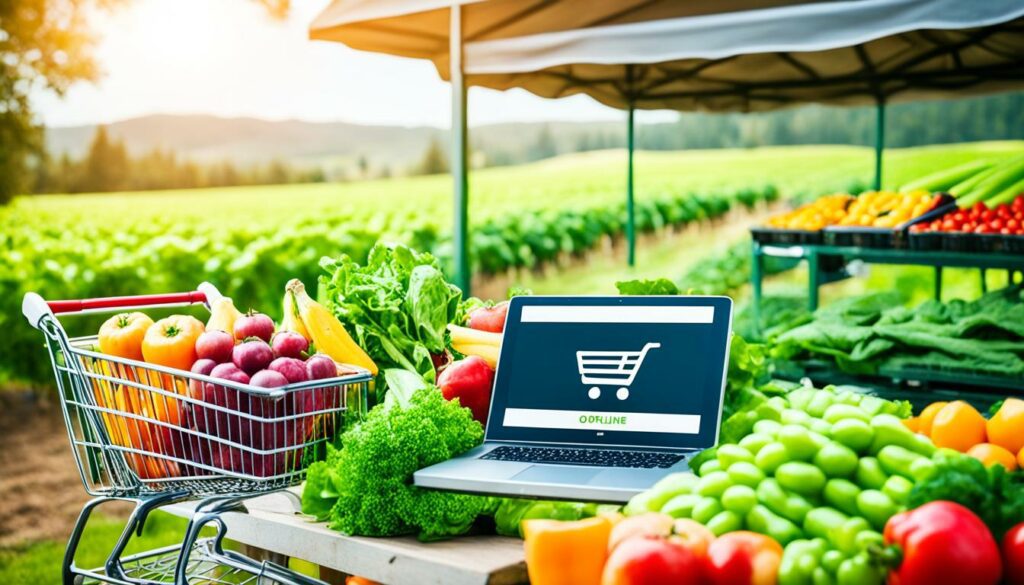
In China, Alibaba’s Rural Taobao is a big marketplace for farming goods. It makes trading easier and opens up more customers for farmers. This method fits well with good online farm management. It aims to make farms more profitable and efficient. The D2C segment has seen big growth in recent years.
The use of D2C is growing everywhere. In places like China and North America, it’s very common. Even regions less used to it, like India, are catching on. D2C helps farmers stay in charge and build a direct link with buyers. Glossier, for example, got a huge investment showing D2C works.
Data and analytics in D2C help make shopping experiences unique. This is important for competing with big stores. More companies are using D2C and changing how they work. They’re partnering and using flexible ways to keep up with what customers want.
To sum up, D2C in farming is changing the game. It makes farming better for everyone. By selling directly, farms become more eco-friendly, open, and profitable.
The use of e-commerce in farming has changed the game. With e-commerce sales topping $4.28 trillion in 2020, the farming world has seen financial benefits. These include lower costs and new ways to make money, especially for those quick to embrace the digital age.
In 2020, the B2B e-commerce market hit $6.64 trillion. It is set to grow by 18.7% yearly until 2028. North America noted that 14% of its B2B e-commerce came from agriculture in 2020, showing its digital shift.
Digital farming has brought a lot of good. From improving how farms are managed to better decision-making, these technologies help make farms more profitable. This includes using:
The U.S. e-commerce food and beverage area made $18.7 billion in 2020. By 2025, it’s expected to hit $25.7 billion, showing e-commerce’s growing role in how we buy food.
Here’s some key data on the rise of e-commerce:
| Year | Global Retail E-commerce Sales (Trillion USD) | U.S. E-commerce Food & Beverage Revenue (Billion USD) | North American B2B Agriculture Marketplace E-commerce Revenue (%) |
|---|---|---|---|
| 2020 | 4.28 | 18.7 | 14 |
| 2022 (Projected) | 5.4 | 25.7 | – |
Using these digital strategies is key for e-commerce profitability farms. Being early to use e-commerce in farming is vital. It ensures success in a fast-growing global market.
The world of farming is now using e-commerce more than ever. This is because e-commerce can help farms make more money online. By using smart marketing and order planning, farms are becoming more efficient and making more profit.
Here’s a big number to show you what’s possible. WebFX helped businesses earn $6 billion by marketing online. They also brought in 24 million leads and helped make 7.14 million phone calls. This shows how powerful online strategies can be for farms.
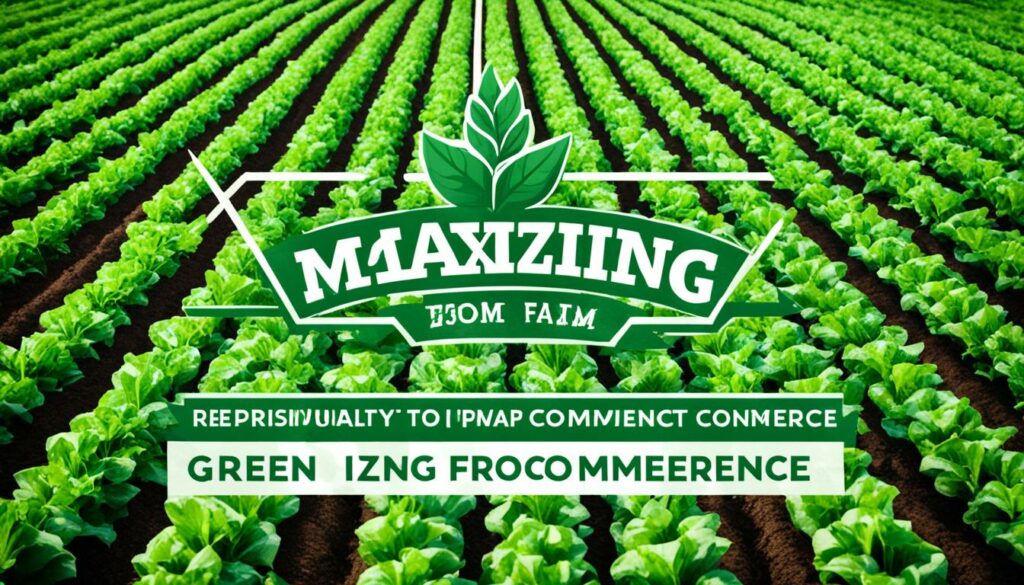
Different industries see different levels of success with their online ads. For example, making electronic parts gets back 105% of what’s spent. Building things sees a massive 225% return. Knowing this helps farmers figure out the best ways to manage their online sales. A return of 400% or more is seen as very good in this area of marketing.
Farms need to use these facts to do better in e-commerce. By making smart choices in setting up their online shops and using new tech like AI and cloud computing, they can lead in online farming sales. This leads to farms being profitable for a long time.
E-commerce has transformed the way agriculture works. Examples like Agrostar, Agrofy, Gramophone, and BigHaat show big growth and profits in this sector. Agrostar has changed the game in buying farm supplies. Now, farmers can get these easily online, saving time and effort.
Agrofy’s online market has made selling and buying farm goods easier. Both sellers and buyers find it easier to connect and do business. They’ve made it simpler for farms to get what they need, showing e-business can be very successful.
These platforms getting a lot of funding shows that the industry sees their value. With e-commerce, farming becomes more efficient and adaptable. It helps businesses tackle challenges and grow, despite tough market conditions.
In this digital age, stories like Agrostar and Agrofy teach us a lot. They show how e-commerce can boost farming’s success and environmental sustainability. They set a high bar for other farm businesses wanting to grow through technology and online reach.
E-commerce is a big win for farm earnings. It helps farms sell in new places, to more people, and with ease. This way, farms can make more money using digital tools and smart strategies.
Start by checking out your market and then create an online shop. Use green, long-lasting ways to do e-business. Make sure you’re making money online.
Using online sales means more places to sell, more customers, and easier shopping. This helps farms make their e-business work well and run it smartly.
Getting e-commerce right takes time and needs tech knowledge. You have to make sure your products work well online. Without a plan, making money online can be hard.
Joining online platforms and talking to people on social media can bring in customers from all over. More customers mean more sales, boosting farm earnings.
Collecting data helps you know what customers like, making your offering better. Running your farm with data means making more money online and running things well.
Show off your products with good descriptions, great pictures, and extras like tips or recipes. Taking this approach helps make money online and boosts the farm’s earnings.
Places like Farmdrop and Rural Taobao gather farm goods in one spot for easy shopping. They make farm products known more widely, helping farms earn more money online.
Things like IoT and blockchain are changing the game in e-commerce farming. IoT helps manage farms better, while blockchain keeps things honest and clear, making online farming more successful.
Trendy methods include selling organic products online and cutting down on food waste. These ways of working help the farming business and grow online earnings.
By selling directly to buyers, farms get closer to customers and cut out middlemen. This model is a great way to manage an online farm and sell directly.
E-commerce lowers costs, finds special markets, and connects farms to the world. This leads to more earnings online and a successful farming business.
Using smart marketing, managing stock well, and keeping up with the latest in tech can make farms more money online. This boosts the farm’s efficiency and its future.
Great achievers in the online farm world are Agrostar, Agrofy, Gramophone, and BigHaat. They have grown and earned well, showing the power of new tech in farming.